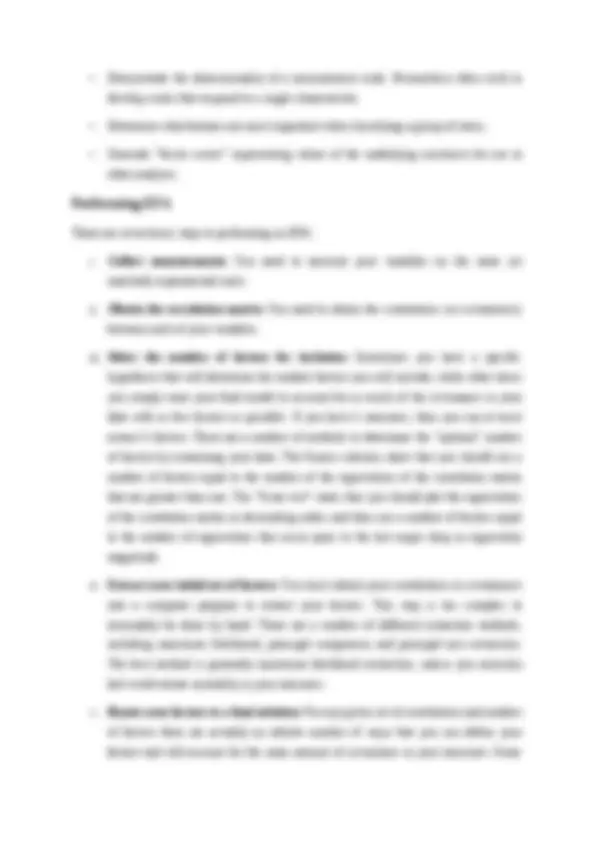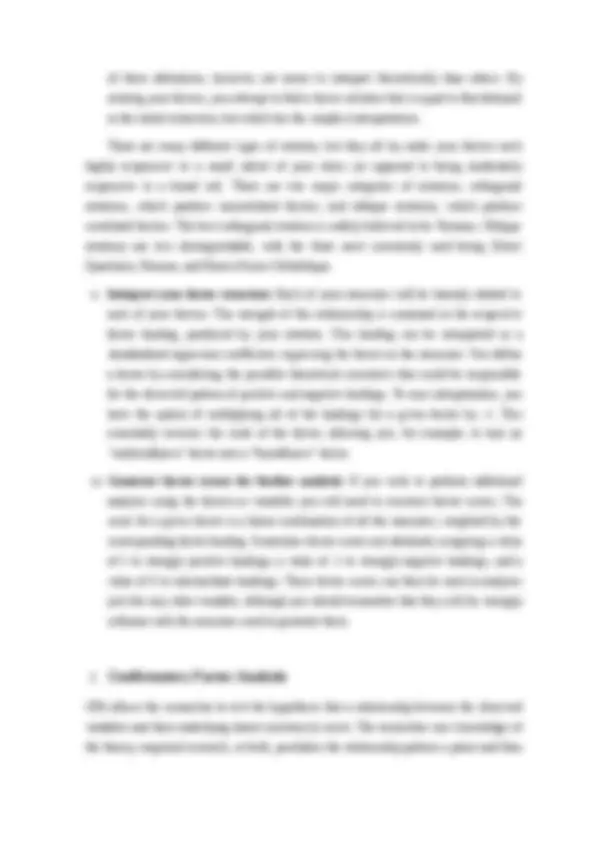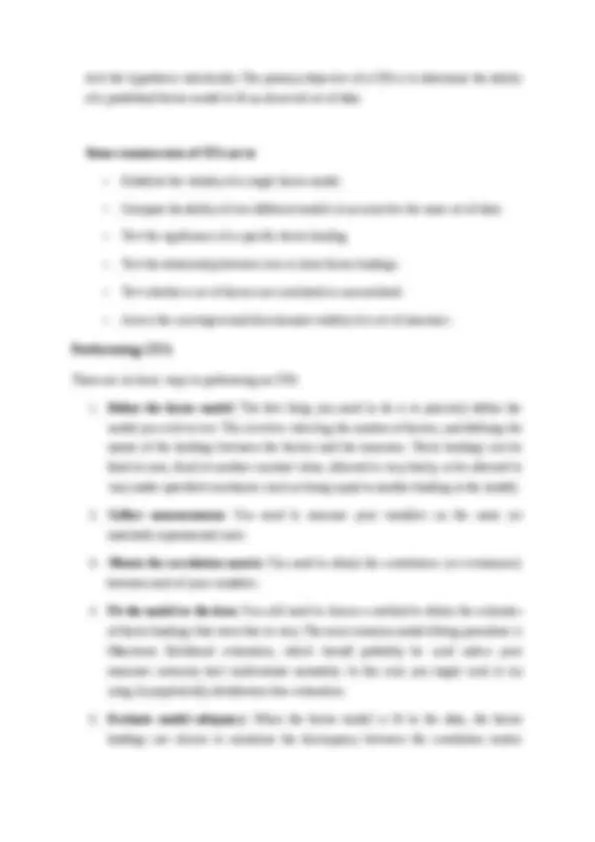





Study with the several resources on Docsity

Earn points by helping other students or get them with a premium plan


Prepare for your exams
Study with the several resources on Docsity

Earn points to download
Earn points by helping other students or get them with a premium plan
Community
Ask the community for help and clear up your study doubts
Discover the best universities in your country according to Docsity users
Free resources
Download our free guides on studying techniques, anxiety management strategies, and thesis advice from Docsity tutors
Factor analysis is a multivariate statistical method used to extract underlying factors from a large set of variables. It helps reduce data complexity and is useful in various applications such as scale construction, establishing antecedents, psychographic profiling, segmentation analysis, and marketing studies. The two main types of factor analysis: exploratory and confirmatory, and their respective uses and processes.
Typology: Study notes
1 / 7

This page cannot be seen from the preview
Don't miss anything!




Factor analysis is a multivariate statistical technique in which there is no distinction between dependent and independent variables. In factor analysis, all variables under investigation are analysed together to extract the underlined factors. Factor analysis is a data reduction method. It is a very useful method to reduce a large number of variables resulting in data complexity to a few manageable factors. These factors explain most part of the variations of the original set of data.
For example, A market researcher might have collect data on say, more than 50 attributes (or items) of a product which may become very difficult to analyse. Factor analysis could help to reduce the data on 50 odd attributes to a few manageable factors. It helps in identifying the underlying structure of the data.
Factor: A factor is a linear combination of variables. It is a construct that is not directly observable but that needs to be inferred from the input variables. The factors are statistically independent. We will show you their application in a regression analysis as a factor scores, when used as independent variables in regression analysis, help to solve the problem of multicollinearity. The factor scores could also used in other multivariate techniques.
The technique of factor analysis has multiple uses as discussed in the following situations:
There are two main types of factor analysis:
discover the nature of the constructs inuencing a set of responses. Exploratory factor analysis is used to measure the underlying factors that affect the variables in a data structure without setting any predefined structure to the outcome. EFA is a technique within factor analysis whose overarching goal is to identify the underlying relationships between measured variables. It is commonly used by researchers when developing a scale (a scale is a collection of questions used to measure a particular research topic) and serves to identify a set of latent constructs underlying a battery of measured variables. It should be used when the researcher has no a priori hypothesis about factors or patterns of measured variables.
of these denitions, however, are easier to interpret theoretically than others. By rotating your factors, you attempt to nd a factor solution that is equal to that obtained in the initial extraction, but which has the simplest interpretation. There are many different types of rotation, but they all try make your factors each highly responsive to a small subset of your items (as opposed to being moderately responsive to a broad set). There are two major categories of rotations, orthogonal rotations, which produce uncorrelated factors, and oblique rotations, which produce correlated factors. The best orthogonal rotation is widely believed to be Varimax. Oblique rotations are less distinguishable, with the three most commonly used being Direct Quartimin, Promax, and Harris-Kaiser Orthoblique.
vi. Interpret your factor structure: Each of your measures will be linearly related to each of your factors. The strength of this relationship is contained in the respective factor loading, produced by your rotation. This loading can be interpreted as a standardized regression coefficient, regressing the factor on the measures. You dene a factor by considering the possible theoretical constructs that could be responsible for the observed pattern of positive and negative loadings. To ease interpretation, you have the option of multiplying all of the loadings for a given factor by -1. This essentially reverses the scale of the factor, allowing you, for example, to turn an “unfriendliness” factor into a “friendliness” factor. vii. Construct factor scores for further analysis: If you wish to perform additional analyses using the factors as variables you will need to construct factor scores. The score for a given factor is a linear combination of all the measures, weighted by the corresponding factor loading. Sometimes factor scores are idealized, assigning a value of 1 to strongly positive loadings, a value of -1 to strongly negative loadings, and a value of 0 to intermediate loadings. These factor scores can then be used in analyses just like any other variable, although you should remember that they will be strongly collinear with the measures used to generate them.
CFA allows the researcher to test the hypothesis that a relationship between the observed variables and their underlying latent construct(s) exists. The researcher uses knowledge of the theory, empirical research, or both, postulates the relationship pattern a priori and then
tests the hypothesis statistically. The primary objective of a CFA is to determine the ability of a predened factor model to t an observed set of data.
Some common uses of CFA are to
There are six basic steps to performing an CFA:
times more than the number of variables (number of statements).
establish the strength of the factor analysis solution it is essential to establish the reliability and validity of the obtained reduction. It is done with the help of KMO and Bartlett’s test of Sphericity.
H 0 : Correlation matrix is insignificant, i.e. correlation matrix is an identity matrix where diagonal elements are one and off diagonal elements are zero.
H 1 : Correlation matrix is significant.
The test is carried out by using a Barttlet test of Sphericity, which takes the determinants of the correlation matrix into consideration. The significance of the correlation matrix ensure that a factor analysis exercise could be carried out.